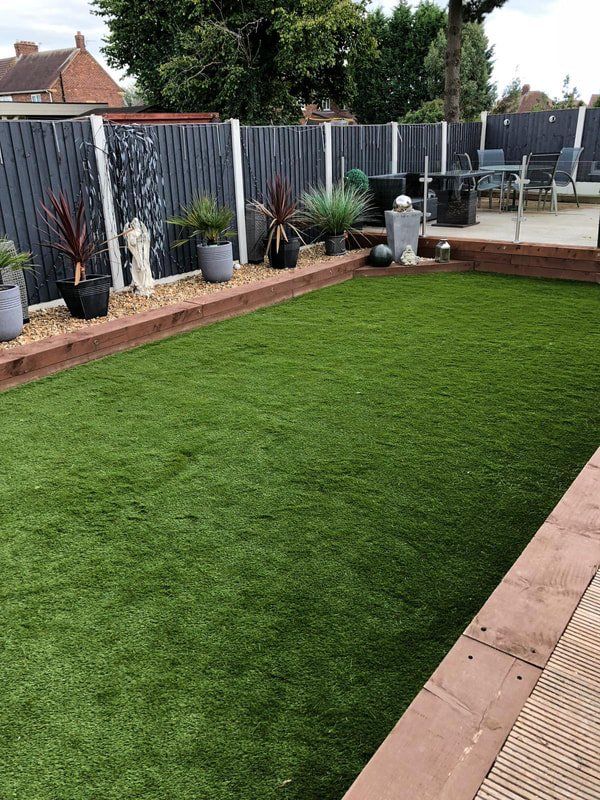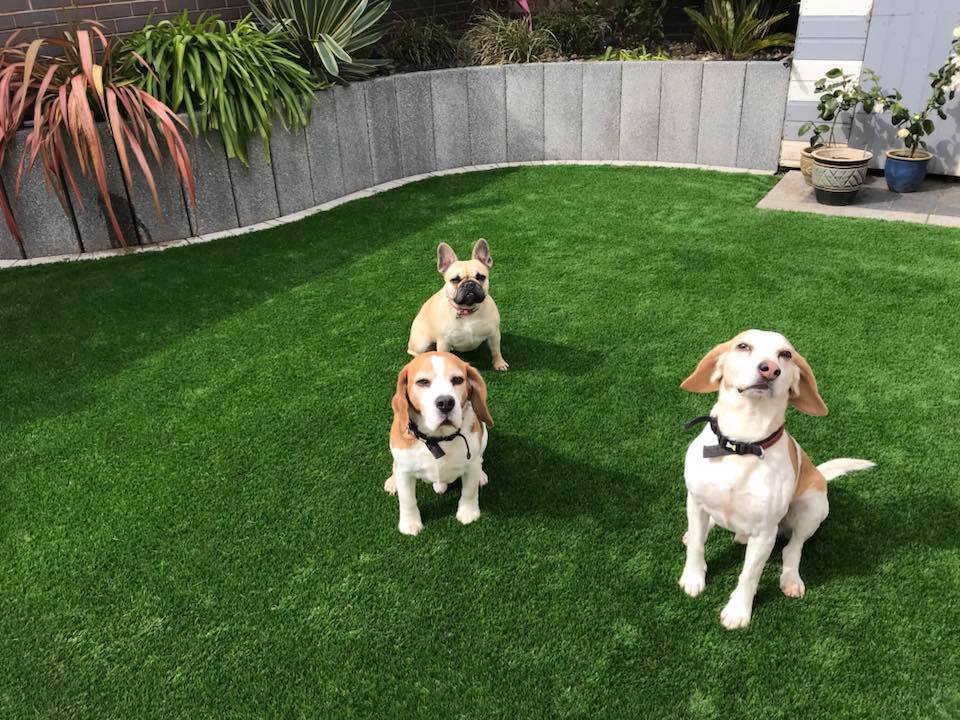How to Clean Artificial Grass
Telephone:
0115-824-4801
Assuming you have artificial grass, there are a few ways you can go about cleaning it. If there is just a small amount of dirt or debris, you can simply sweep it away with a broom. For tougher stains, you may need to use a hose to power wash the area. You can also use a mild soap and water solution to scrub away any stubborn grime. Just be sure to rinse the area well afterward so that no soap residue is left behind.
No matter what method you use, be sure to avoid using any harsh chemicals or cleaners on your artificial grass. These can damage the synthetic fibres and cause them to break down over time. If you need to remove any tough stains, it's best to consult with a professional cleaning service.
Why is my artificial grass turning black?
There are a few reasons why your artificial grass might be turning black. It could be due to dirt and debris buildup, mould or mildew growth, or even UV damage from the sun.
If you notice that your artificial grass is starting to turn black, be sure to clean it as soon as possible. Use a mild detergent and warm water to remove any dirt or debris, then rinse with clean water. You may also need to treat mould or mildew if you see signs of growth.
If you believe your artificial grass is turning black due to UV damage, try moving it to a shaded area or using a tarp or umbrella for protection. You can also purchase artificial grass that is specifically designed to resist UV damage.
If your artificial grass is turning black, it could be because of a number of reasons. Here are some possible causes:
- Your artificial grass may be too close to a heat source.
- You may be using too much water when you clean your artificial grass.
- There may be something on your artificial grass that is causing it to turn black, such as leaves or twigs.
- If you live in an area with high humidity, this could also cause your artificial grass to turn black.
- Finally, if you have installed your artificial grass on concrete or asphalt, the heat from these surfaces can also cause the turf to turn black.
If you think that one of these factors may be causing your artificial grass to turn black, you should take steps to correct the problem. For example, if you think that your artificial grass is too close to a heat source, you should move it away from the heat source. If you are using too much water when you clean your artificial grass, you should reduce the amount of water you are using. And if there is something on your artificial grass that is causing it to turn black, such as leaves or twigs, you should remove it.
If you have taken steps to correct the problem and your artificial grass is still turning black, you may need to replace the turf. Contact a professional artificial grass installer to discuss your options.
How often should you clean artificial grass?
It's important to keep your artificial grass clean and free of debris to ensure that it looks its best and lasts for years to come. But how often should you actually clean it?
Here are a few guidelines to follow:
- If there is heavy traffic on your artificial grass, you should aim to clean it at least once a week. This will help remove any dirt or debris that could become lodged in the grass fibres and cause them to break down over time.
- If you have pets that use the artificial grass area, you should also aim to clean it more frequently. Pet waste can contain harmful bacteria that can contaminate the grass and cause health problems for both humans and animals.
- In general, it is a good idea to give your artificial grass a deep clean at least once a month. This will help remove any build-up of dirt, debris, or pet waste that could cause the grass to break down over time.
- If you live in an area with high pollen counts, you may need to clean your artificial grass more frequently. Pollen can cause allergies and other respiratory problems, so it is important to keep the area as clean as possible.
- If you notice any mould or mildew growing on your artificial grass, you should clean it immediately. Mould and mildew can cause health problems, so it is important to get rid of them as soon as possible.
Following these guidelines will help you keep your artificial grass looking its best for years to come. If you have any questions about how often to clean your artificial grass, or if you need help cleaning it, please contact our professional artificial grass experts at Professional Gardeners of Nottingham. They will be able to give you the best advice for your particular situation.
Contact us today to learn how we can service your artificial grass needs.
Artificial Grass Cleaning
How to clean artificial grass dog urine
If you have artificial grass in your yard, you know that it's a great way to keep your lawn looking green and pristine all year long. But if you have dogs, you also know that their pee can cause yellow patches on your grass. Here's how to clean artificial grass dog urine so that your lawn stays looking great:
- Use a hose to rinse off the area where your dog peed. This will remove most of the urine and make it easier to clean.
- Mix up a solution of 1 part water to 1 part white vinegar.
- Pour the solution over the affected area and let it sit for about 15 minutes.
- Use a scrub brush to scrub the area.
- Rinse the area with clean water.
- Repeat steps 2-5 if necessary.
- Let the area dry completely before allowing your dog back on the grass.
Follow these steps and you'll be able to keep your artificial grass looking great, even with a few accidents from your furry friend.
How to clean dog poop off artificial grass
Assuming you have already picked up the dog poop, there are a few ways you can clean any residual mess from your artificial grass. One way is to use a garden hose to spray the area clean. Another way is to use a mild soap and water solution, applied with a sponge or cloth. Once you have scrubbed the area clean, be sure to rinse it well with water to remove any soap residue. Lastly, you can try using a disinfectant or enzymatic cleaner specifically designed for cleaning up pet waste.
Cleaning dog poop off artificial grass can be a bit tricky, but it is definitely possible. Here are a few tips to help you get started:
- Scoop up the poop with a plastic bag or paper towel.
- Rinse the area with water to remove any remaining feces.
- Apply a pet stain and odour remover to the area.
- Scrub the area with a brush to loosen any stubborn poop particles.
- Rinse the area again with water.
- Allow the area to dry completely before letting your dog back onto the grass.
Following these steps should help you clean up any dog poop messes on your artificial grass.
How to clean bird poop off artificial grass
If you have bird poop on your artificial grass, the best way to clean it up is with a hose and some warm water. You can also use a mild soap if necessary. Just be sure to rinse the area well afterwards so that no residue is left behind. If the bird poop is fresh, it should come off easily with just a little water pressure. If it's been there for a while, you may need to use a little elbow grease to get it all off. Assuming you have bird poop on your artificial grass, the following are some recommended ways to clean it up:
- Use a garden hose to spray the area and loosen the bird poop.
- Pick up the bird poop with a paper towel or similar absorbent material.
- If any residue remains, blot it with a damp cloth or sponge.
- Finally, rinse the area with water from the garden hose.
As you can see, cleaning up bird poop is relatively easy and only requires a few simple household items. So if you have artificial grass, be sure to keep an eye out for any bird activity and clean up any messes as soon as possible!
How to clean moss from artificial grass
If you have artificial grass, you know that it can be a pain to keep clean. Moss can quickly build up on the blades of grass, making it look dirty and unkempt. While there are products available that claim to help with this problem, many of them are expensive and don't always work as well as advertised.
Fortunately, there are some simple things you can do to get rid of moss on your artificial grass. One of the most effective methods is to simply brush it away with a stiff broom. You can also use a garden hose to blast away any moss that is clinging to the blades.
Another option is to treat the affected area with a solution of vinegar and water. Just mix equal parts vinegar and water in a spray bottle and apply it to the mossy area. Let it sit for a few minutes before scrubbing away the moss with a broom or hose.
If you have a lot of moss on your artificial grass, you may need to treat it with a commercial Moss Killer. Be sure to follow the directions carefully and apply the product as directed.
With a little effort, you can keep your artificial grass looking clean and green all year long!
How to clean paint off artificial grass
One of the benefits of artificial grass is that it is easy to clean and maintain. However, if you're not careful, paint can end up on your grass, leaving a mess. Fortunately, there are a few simple ways to clean paint off artificial grass.
First, try using a mild soap and water solution. If this doesn't work, you can try using a slightly more abrasive cleaner like vinegar or rubbing alcohol. Be sure to test any cleaner in an inconspicuous area first to make sure it won't damage the grass.
If those cleaners don't work, you may need to use something stronger like paint thinner or acetone. Again, be sure to test these in a small area first. Once you've removed the paint, be sure to rinse the area well with water.
If you have any stubborn paint stains that just won't come out, you may need to replace the affected area of grass. Luckily, artificial grass is easy to cut and install, so this shouldn't be too difficult.
With a little elbow grease, you should be able to get rid of paint stains on your artificial grass. Just be sure to use the appropriate cleaner for the type of paint stain you're dealing with. And, as always, test any cleaners in a small area first.




